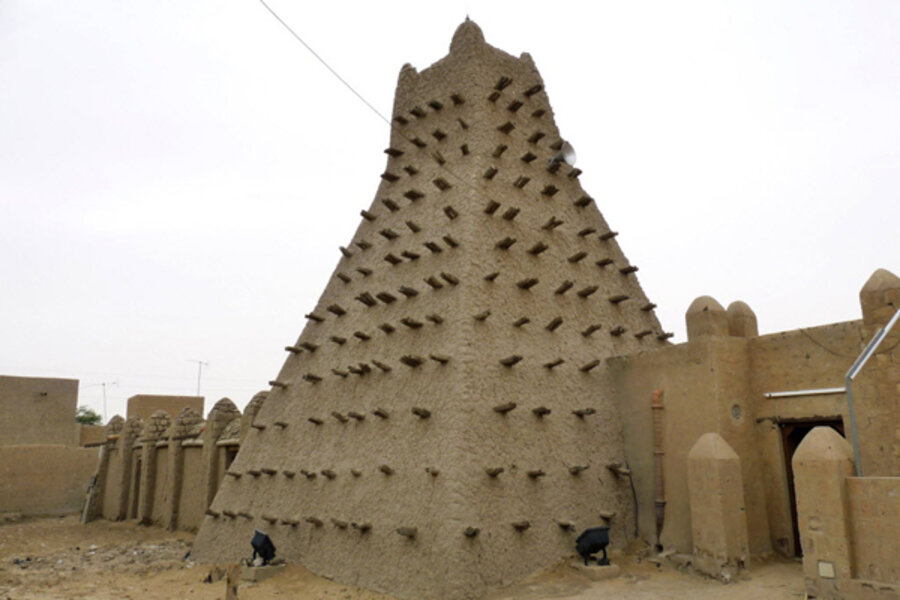Again: Islamists destroy monuments, this time in Timbuktu
Loading...
| Bamako, Mali
Al Qaeda-linked Mali Islamists armed with Kalashnikovs and pick-axes destroyed centuries-old mausoleums of saints in the UNESCO-listed city of Timbuktu on Saturday in front of shocked locals, witnesses said.
The Islamist Ansar Dine group backs strict sharia, Islamic law, and considers the shrines of the local Sufi version of Islam to be idolatrous. Sufi shrines have also been attacked by hardline Salafists in Egypt and Libya in the past year.
The attack came just days after UNESCO placed Timbuktu on its list of heritage sites in danger and will recall the 2001 dynamiting by the Taliban of two 6th-century statues of Buddha carved into a cliff in Bamiyan in central Afghanistan.
"They are armed and have surrounded the sites with pick-up trucks. The population is just looking on helplessly," local journalist Yeya Tandina said by telephone.
Tandina and other witnesses said Ansar Dine had already destroyed the mausoleums of three local saints – Sidi Mahmoud, Sidi El Mokhtar, and Alfa Moya – and at least seven tombs.
"The mausoleum doesn't exist any more and the cemetery is as bare as a soccer pitch," local teacher Abdoulaye Boulahi said of the Mahmoud burial place.
"There's about 30 of them breaking everything up with pick-axes and hoes. They've put their Kalashnikovs down by their side. These are shocking scenes for the people in Timbuktu," said Boulahi.
Contacted late on Saturday, Tandina said Ansar Dine had halted the attacks on the holy site. Attempts to contact members of the group were unsuccessful.
Locals said the attackers had threatened to destroy all of the 16 main mausolem sites by the end of the day. UNESCO Director-General Irina Bokova called for an immediate halt.
"There is no justification for such wanton destruction and I call on all parties engaged in the conflict to stop these terrible and irreversible acts," she said in a statement. The sites date from Timbuktu's Golden Age in the 16th century.
France's Foreign Ministry condemned the attacks on what it called "a part of the soul of this prestigious Sahelian city."
Ansar Dine has gained the upper hand over less well-armed Tuareg-led separatists since the two joined forces to rout government troops and seize control in April of the northern two-thirds of the inland West African state.
Salt, Slaves, Gold, and Learning
Located on an old Saharan trading route that saw salt from the Arab north exchanged for gold and slaves from black Africa to the south, Timbuktu blossomed in the 16th century as an Islamic seat of learning, home to priests, scribes, and jurists.
Mali had in recent years sought to create a desert tourism industry around Timbuktu but even before April's rebellion many tourists were being discouraged by a spate of kidnappings of Westerners in the region claimed by Al Qaeda-linked groups.
UNESCO's World Heritage Committee said this week it had accepted the request of the Malian government to place Timbuktu on its list of endangered heritage sites.
"The Committee ... also asked Mali's neighbours to do all in their power to prevent the trafficking in cultural objects from these sites," it said of the risk of looting.
The rebel seizure of the north came as the southern capital, Bamako, was struggling with the aftermath of a March 22 coup.
Mali's neighbors are seeking UN backing for a military intervention to stabilize the country but Security Council members say they need more details on the mission being planned.
* Writing and additional reporting by Mark John in Dakar; and John Irish in Paris; Editing by Roger Atwood







